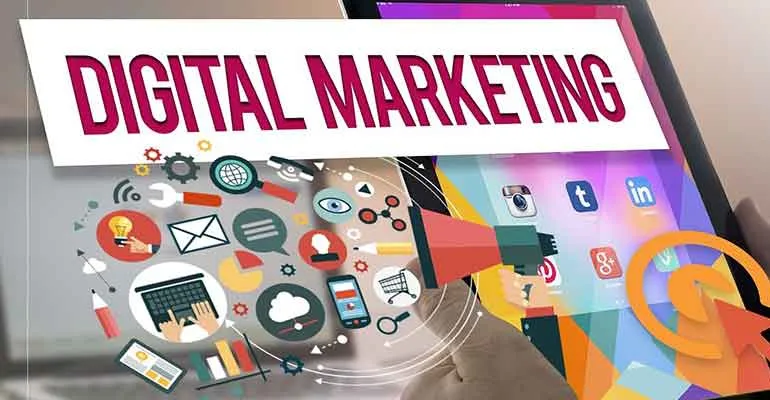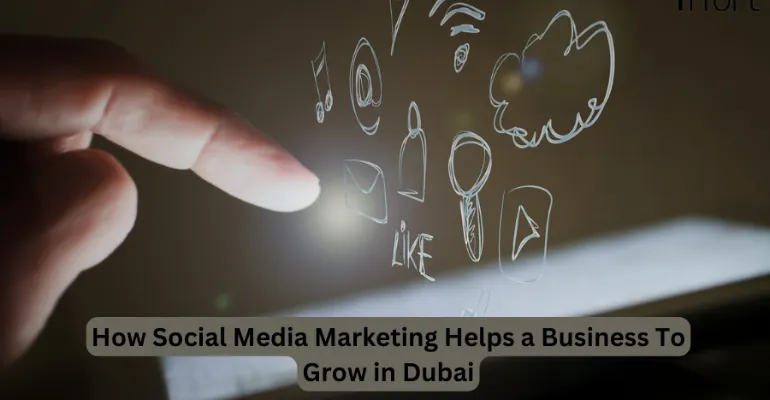Social media marketing has become an essential tool for businesses aiming to grow and thrive in the UAE. With over 9.5 million social media users in the country, platforms like Facebook, Instagram, LinkedIn, and TikTok offer a goldmine of opportunities to connect with potential customers, build brand awareness, and drive sales. But how can businesses effectively leverage social media marketing to see real results? Here’s a step-by-step guide to help you navigate the dynamic world of social media marketing in the UAE.
1. Understand the Local Audience
The first step in leveraging social media marketing for business growth is understanding your local audience. In the UAE, a diverse population means a mix of cultures, languages, and preferences. Take the time to research and understand who your target audience is. Consider factors such as age, gender, location, interests, and online behavior.
Tip: Use tools like Facebook Audience Insights or Google Analytics to gather demographic data and tailor your social media strategy accordingly.
2. Choose the Right Platforms
Not all social media platforms are created equal, and not all will be relevant to your target audience. For instance, while Instagram and Facebook are popular among the younger generation, LinkedIn is ideal for B2B businesses looking to connect with professionals in the UAE.
Key Platforms to Consider:
– Instagram: Great for visual content and brand storytelling.
– Facebook: Ideal for building communities and engaging with a broad audience.
– LinkedIn: Perfect for B2B marketing and networking with industry professionals.
– TikTok: An emerging platform for reaching younger audiences through creative video content.
3. Create Culturally Relevant Content
The UAE has a unique cultural landscape that influences how people consume content. Your social media content should be culturally relevant and sensitive to local norms. Use local influencers and community leaders to create content that resonates with your audience. Celebrate local events, holidays, and national pride moments to connect on a deeper level with your followers.
4. Utilize Paid Advertising Effectively
Social media platforms offer a variety of paid advertising options that can help you reach a larger and more targeted audience. In the UAE, Facebook and Instagram Ads are widely used by businesses to increase their visibility and drive traffic to their websites or physical stores. Leverage paid advertising to promote your products or services, run special promotions, or drive sign-ups for events.
Pro Tip: Use advanced targeting options available in Facebook and Instagram Ads Manager to narrow down your audience based on location, language, interests, and more.
5. Engage with Your Audience
Engagement is key to building a loyal community around your brand. Respond promptly to comments, messages, and reviews. Use interactive content such as polls, quizzes, and stories to engage with your audience and encourage participation. Host live sessions to address customer queries, provide value, and build trust.
6. Track, Analyze, and Adjust Your Strategy
To ensure your social media marketing efforts are driving growth, it’s crucial to track and analyze your performance. Use tools like Google Analytics, Facebook Insights, and Instagram Analytics to monitor metrics such as engagement rates, reach, clicks, and conversions. Regularly review this data to understand what’s working and what isn’t, and adjust your strategy accordingly.
7. Collaborate with Local Influencers
Influencer marketing is highly effective in the UAE, where consumers trust recommendations from local influencers. Partner with influencers who align with your brand values and have a strong following among your target audience. This can help you reach new customers, build credibility, and boost your brand’s visibility.
Conclusion: Maximize Growth Through Social Media Marketing
Social media marketing is a powerful tool for business growth in the UAE. By understanding your audience, choosing the right platforms, creating culturally relevant content, utilizing paid ads, engaging with followers, analyzing performance, and collaborating with local influencers, you can effectively leverage social media to achieve your business goals.
Start leveraging these strategies today and watch your business grow in the dynamic UAE market!
Keywords Used:
– Social media marketing
– Business growth in the UAE
– UAE social media strategy
– Influencer marketing in UAE
Meta Description:
Discover how to leverage social media marketing for business growth in the UAE with our comprehensive guide. Learn strategies for engaging your audience, choosing the right platforms, and maximizing your reach.
“Top 5 Digital Marketing Trends to Watch in the UAE”
The digital landscape in the UAE is evolving rapidly, and staying ahead of the curve is crucial for businesses looking to thrive in this competitive market. As 2024 unfolds, several digital marketing trends are emerging that could shape how businesses connect with their audience, drive engagement, and achieve growth. From artificial intelligence to voice search, here are the top 5 digital marketing trends to watch in the UAE.
1. The Rise of Artificial Intelligence (AI) in Marketing
Artificial intelligence is revolutionizing digital marketing worldwide, and the UAE is no exception. AI-powered tools are transforming how businesses approach customer service, data analysis, and personalization. Chatbots, for instance, are becoming increasingly popular for providing instant customer support, while AI algorithms help marketers analyze consumer behavior and predict trends with greater accuracy.
Why It Matters:
AI can help UAE businesses automate repetitive tasks, optimize ad targeting, and deliver highly personalized customer experiences, leading to increased customer satisfaction and loyalty.
2. Increased Focus on Video Content
Video content continues to dominate the digital space, and it’s becoming a must-have for businesses in the UAE. With platforms like TikTok, Instagram Reels, and YouTube gaining massive traction, brands are investing more in video marketing to capture attention and convey their messages effectively.
What to Watch:
Short-form videos, live streaming, and interactive video content are particularly popular. Businesses should focus on creating engaging, culturally relevant videos that resonate with their audience and encourage shares and interactions.
3. Growth of Influencer Marketing
Influencer marketing is not a new trend, but its importance is growing, especially in the UAE. Consumers in the UAE trust influencers, particularly local ones, who align with their values and lifestyle. Collaborating with influencers allows brands to reach a broader audience, build credibility, and generate authentic content.
Key Strategy:
Micro-influencers, those with a smaller but highly engaged following, are becoming more influential than ever. Brands should consider partnering with micro-influencers who have a niche audience relevant to their products or services.
4. Voice Search Optimization
With the increasing use of smart speakers and voice assistants like Siri, Alexa, and Google Assistant, voice search is becoming a critical component of digital marketing strategies. In the UAE, a tech-savvy population is rapidly adopting these technologies, making it essential for businesses to optimize their content for voice search.
Action Points:
Focus on conversational keywords and long-tail phrases in your content, as people tend to use natural language when speaking to voice assistants. Ensure your website is mobile-friendly, fast-loading, and provides clear, concise answers to common questions.
5. Enhanced Data Privacy and Security Measures
As data privacy becomes a growing concern among consumers, businesses in the UAE must prioritize transparency and security in their digital marketing efforts. The UAE government has introduced new data protection laws, aligning with global standards to ensure consumer data is handled responsibly.
Why It’s Critical:
Businesses need to build trust by being transparent about how they collect, store, and use data. Implementing robust security measures and complying with data protection regulations will not only protect your brand but also enhance customer trust and loyalty.
Conclusion: Embrace the Future of Digital Marketing in the UAE
To remain competitive in the dynamic UAE market, businesses must stay informed and adapt to these emerging digital marketing trends. By embracing AI, investing in video content, leveraging influencer marketing, optimizing for voice search, and prioritizing data privacy, you can position your brand for success in 2024 and beyond.
Stay ahead of the curve and start integrating these trends into your digital marketing strategy today!














